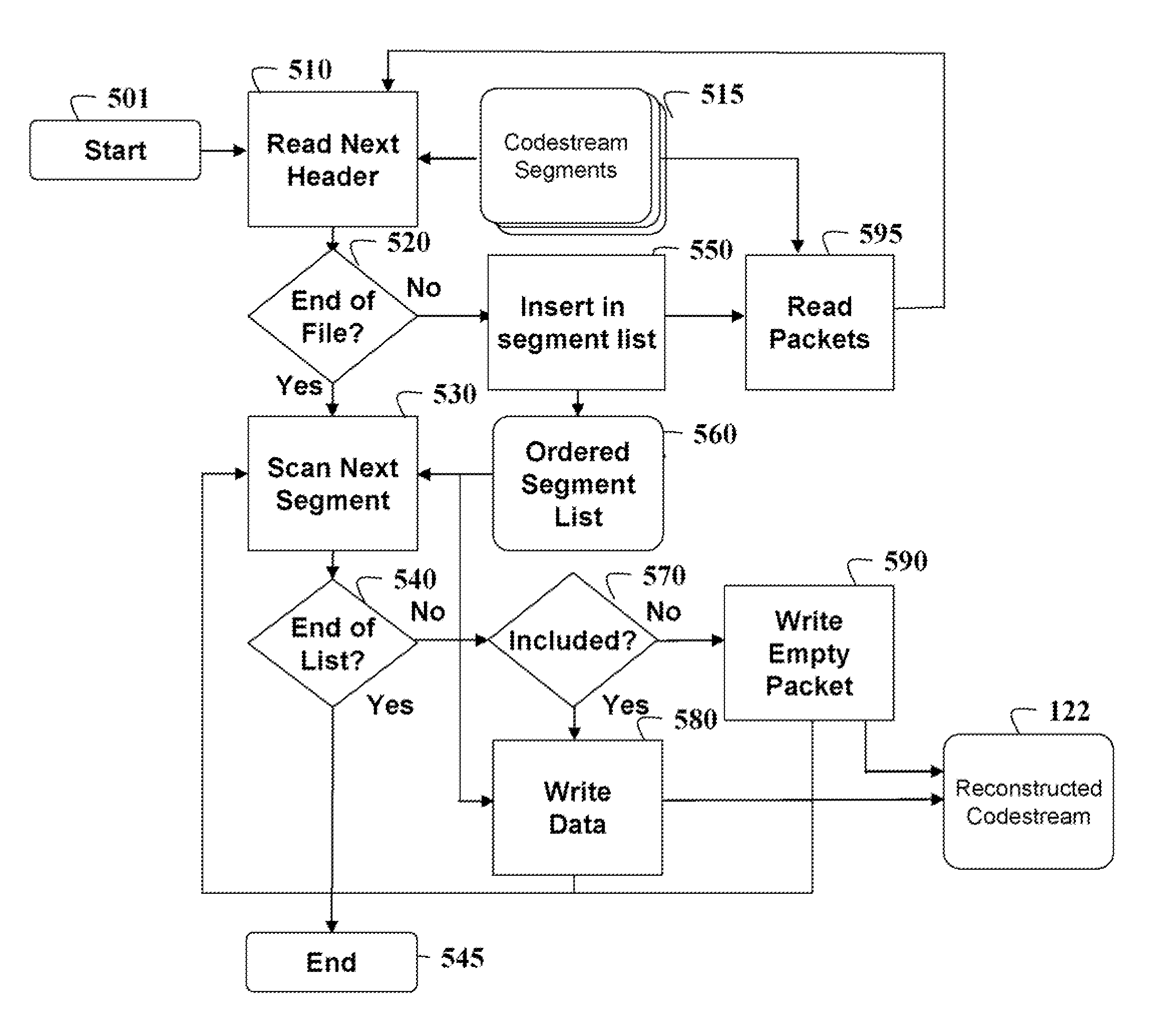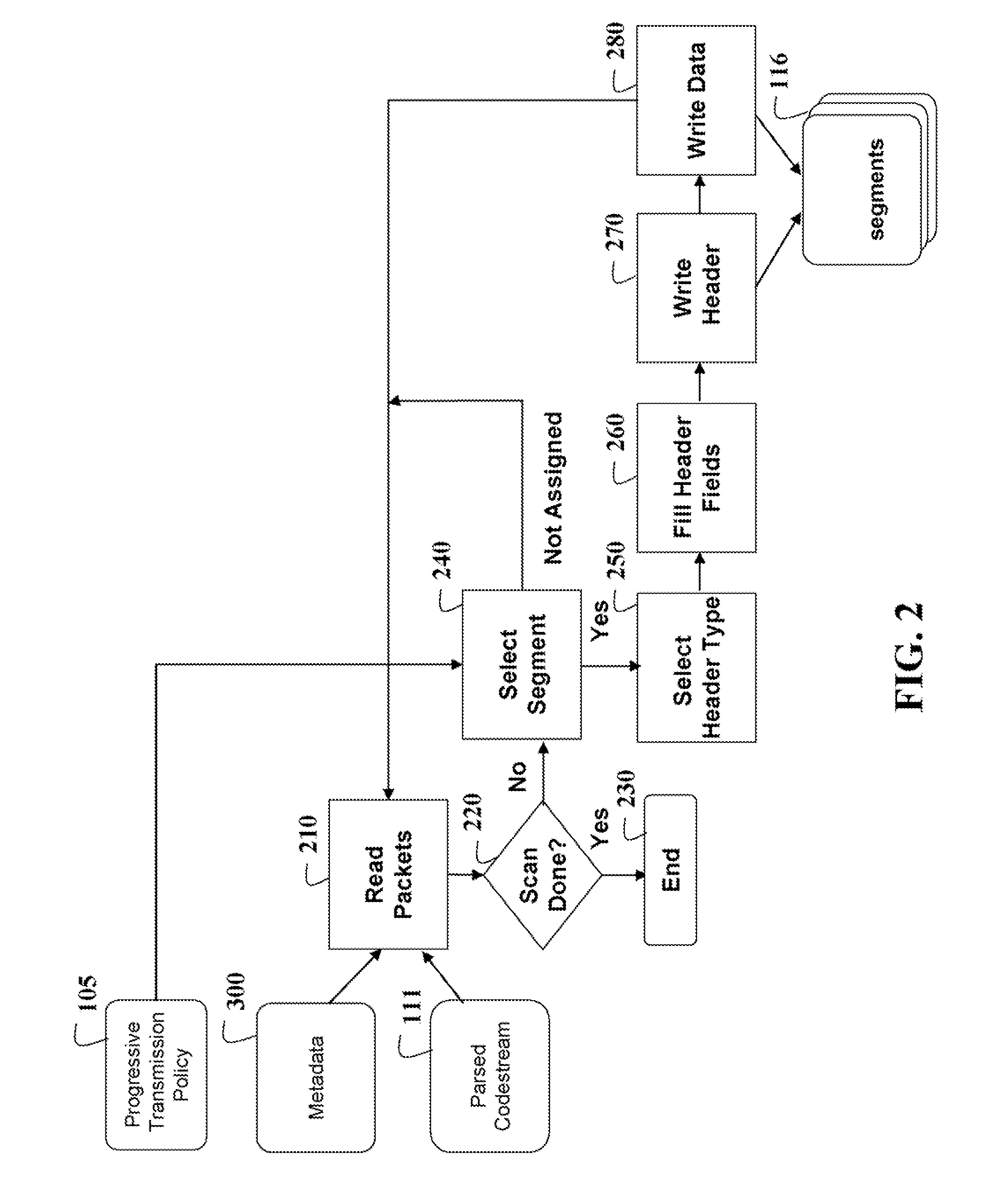Server-Driven Progressive Image Transmission
a server-driven, progressive image technology, applied in the field of image and video transmission, can solve the problems of limiting the effective application of a single ordering, increasing the size of the stream, and inability to store, process, transmit and render high-quality images
- Summary
- Abstract
- Description
- Claims
- Application Information
AI Technical Summary
Problems solved by technology
Method used
Image
Examples
Embodiment Construction
[0032]Embodiments of our invention provide a method for generating and transmitting an image progressively from a server to a client. Our method is server-driven and does not require input from the client in order to operate. The invention facilitates a wide variety of progressions with minimal signaling overhead. The invention also enables incremental decoding and rendering of the reconstructed image at the client with minimal delay.
[0033]A key difference between our invention and the conventional JPIP protocol is the mode of interaction. JPIP is defined as a client-driven request-response protocol. In contrast, the method according to the invention provides the image to the client in a progressive order that is entirely prescribed by the server. With conventional JPIP, this could potentially require many thousands of requests by the client to achieve the same desired ordering. The invention, does require any request protocol at the client and does not add any transmission request ...
PUM
 Login to View More
Login to View More Abstract
Description
Claims
Application Information
 Login to View More
Login to View More - R&D
- Intellectual Property
- Life Sciences
- Materials
- Tech Scout
- Unparalleled Data Quality
- Higher Quality Content
- 60% Fewer Hallucinations
Browse by: Latest US Patents, China's latest patents, Technical Efficacy Thesaurus, Application Domain, Technology Topic, Popular Technical Reports.
© 2025 PatSnap. All rights reserved.Legal|Privacy policy|Modern Slavery Act Transparency Statement|Sitemap|About US| Contact US: help@patsnap.com



